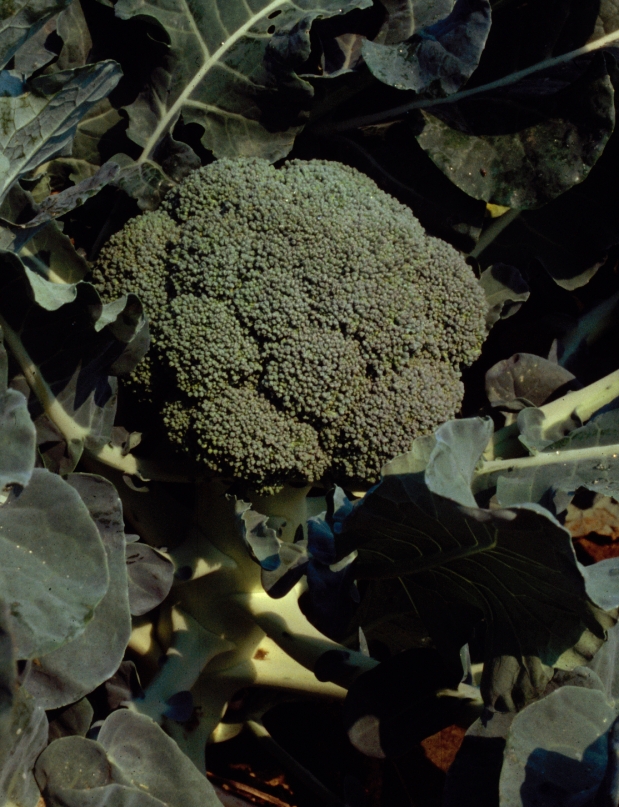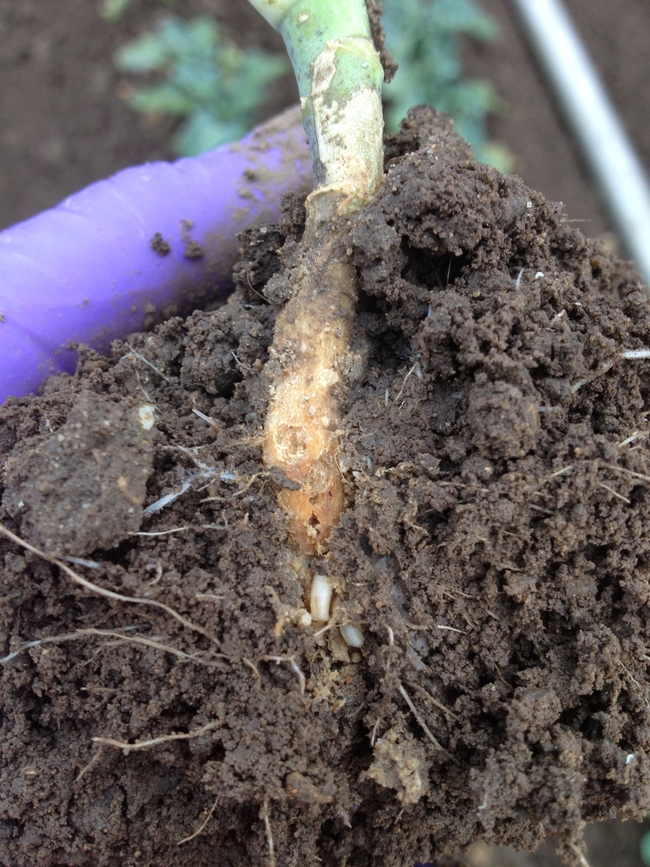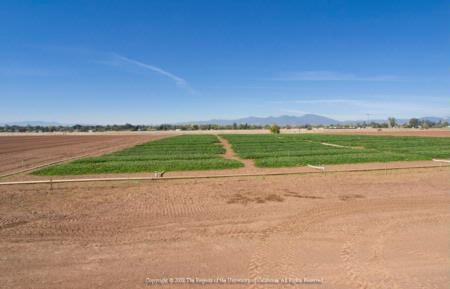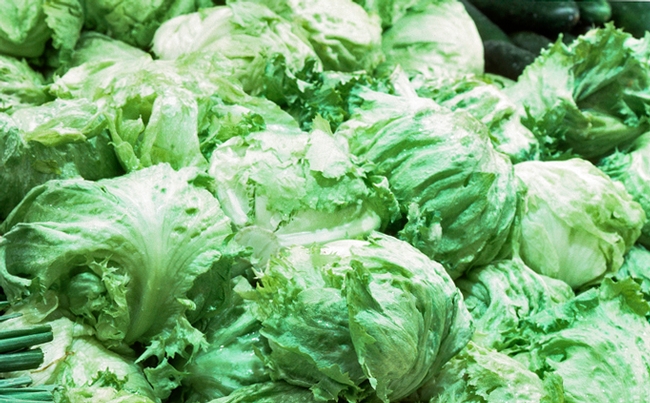- Author: Pamela Kan-Rice
New studies with sample costs to produce and harvest iceberg lettuce and broccoli for fresh market in Monterey, Santa Cruz and San Benito counties have been released by UC ANR Agricultural Issues Center and UC Cooperative Extension. Vegetable growers may find these useful for estimating their own production costs and potential returns on investment.
“These studies have an expanded section on labor, which includes information on California's new minimum wage and overtime laws,” said Laura Tourte, UC Cooperative Extension farm management advisor in Santa Cruz, Monterey and San Benito counties, who co-authored the study.

Both studies assumes a farm operation of 1,500 non-contiguous acres of rented land. The hypothetical iceberg-lettuce farm has 250 acres planted to iceberg lettuce. The lettuce is hand-harvested into 42-pound cartons containing 24 film-wrapped heads. The hypothetical broccoli farm has 500 acres planted to broccoli. The broccoli is hand-harvested into 21-pound bunch cartons. On each farm, the remaining acreage is assumed to be planted to other cool season vegetable crops.
The authors describe the assumptions used to identify current costs for production material inputs, cash and non-cash overhead. Ranging analysis tables show net profits over a range of prices and yields. Other tables show the monthly cash costs, the costs and returns per acre, hourly equipment costs, and the whole farm annual equipment, investment and business overhead costs.
Free copies of “Sample Costs to Produce and Harvest Iceberg Lettuce in the Central Coast - 2017” and “Sample Costs to Produce and Harvest Broccoli in the Central Coast - 2017” and other sample cost of production studies for many commodities are available. To download the cost studies, visit the UC Davis Department of Agricultural and Resource Economics website at https://coststudies.ucdavis.edu.
The cost and returns studies program is funded by the UC Agricultural Issues Center and UC Cooperative Extension, both of which are part of the UC Division of Agriculture and Natural Resources, and the UC Davis Department of Agricultural and Resource Economics.
For additional information or an explanation of the calculations used in the studies, contact Jeremy Murdock of the Agricultural Issues Center at (530) 752-4651, Richard Smith UC Cooperative Extension advisor in Monterey County, at (831) 759-7357 or Tourte at (831) 763-8005.
- Author: Pamela Kan-Rice
UC ANR scientists get $450,000 to study pesticide alternatives

The root maggot, a pest of cole crops, can wipe out an entire field of broccoli or cauliflower by tunneling through the plants’ roots. With a new $302,542 grant from the Department of Pesticide Regulation, Shimat Joseph, UC Cooperative Extension advisor in Monterey County, will study ways growers can protect their high-value crops from this persistent pest.
“In the Salinas Valley, cabbage maggot infestation in a field can exceed 90 percent,” said Joseph, who specializes in integrated pest management.

Joseph, who specializes in entomology, will evaluate the susceptibility of broccoli when it is planted next to other various crops such as turnip, lettuce, cauliflower or cabbage, to see if the neighboring crop influences the broccoli field’s attractiveness to cabbage maggots. He will also evaluate different broccoli and cauliflower varieties for their resistance or tolerance to the maggots and will look into the role planting date in determining a plant’s susceptibility to the pest.
Lynn Epstein, professor in the Department of Plant Pathology at UC Davis, received a $153,289 Department of Pesticide Regulation grant to study alternatives to methyl bromide for strawberry nursery fumigation.
California produces more than a billion strawberry runner plants every year, with a total annual value of approximately $60 million. For the past 50 years, fumigating the soil with methyl bromide before planting has been the most effective way to keep soil-borne pathogens, nematodes and weeds from overwhelming strawberry nursery plants. In recent years, though, methyl bromide has become increasingly restricted, with the intention of eventually phasing it out entirely.

Anaerobic soil disinfestation integrates heat from solarization and oxygen deprivation from flooding, according to Epstein.
“We’ll incorporate a relatively inexpensive carbon source into the topsoil, irrigate it to field capacity, and then cover the amended soil with a plastic tarp,” Epstein said. The anaerobic byproducts that build up are toxic to pathogens, but those byproducts will degrade rapidly after the tarp is removed.”
- Contact: Pam Kan-Rice, (530) 754-3912, pam.kanrice@ucanr.edu
- Contact: Richard DeMoura, (530) 752-3589, rdemoura@ucdavis.edu

Analysis for each crop is based upon hypothetical farm operations using practices common in the region. Input and reviews were provided by UC Cooperative Extension farm advisors, researchers, growers, farm accountants, pest control advisers, consultants and other agricultural associates.
Assumptions used to identify current costs for the individual crops, material inputs, cash and non-cash overhead are described. A ranging analysis table shows profits over a range of prices and yields. Other tables show the monthly cash costs, the costs and returns per acre, hourly equipment costs, and the whole farm annual equipment, investment, and business overhead costs.
The new studies are the following:
- Sample Costs to Produce Fresh Market Broccoli, 2012, Central Coast, by Surendra K. Dara, Karen M. Klonsky and Kabir P. Tumber.
- Sample Costs to Produce Cotton (Acala Variety), 2012, San Joaquin Valley; Sample Costs to Produce Cotton (Pima Variety), 2012, San Joaquin Valley; and Sample Costs to Produce Cotton (Transgenic Herbicide Resistant Acala Variety) 2012, San Joaquin Valley by Robert B. Hutmacher, Steven D. Wright, Larry Godfrey, Daniel S. Munk, Brian H. Marsh, Karen M. Klonsky, Richard L. De Moura and Kabir P. Tumber.
- Sample Costs to Produce Oat Hay (Dryland), 2012, Sacramento Valley by Rachael Long, Karen M. Klonsky and Richard L. De Moura.
- Sample Costs to Establish and Produce Alfalfa Hay, 2012, Intermountain, by Steve B. Orloff, Karen M. Klonsky and Kabir P. Tumber.
All cost of production studies are available online at http://coststudies.ucdavis.edu, at UC Cooperative Extension offices and by calling (530) 752-3589. For additional information on the studies, contact Richard De Moura at rdemoura@ucdavis.edu in the UC Davis Department of Agricultural and Resource Economics.



